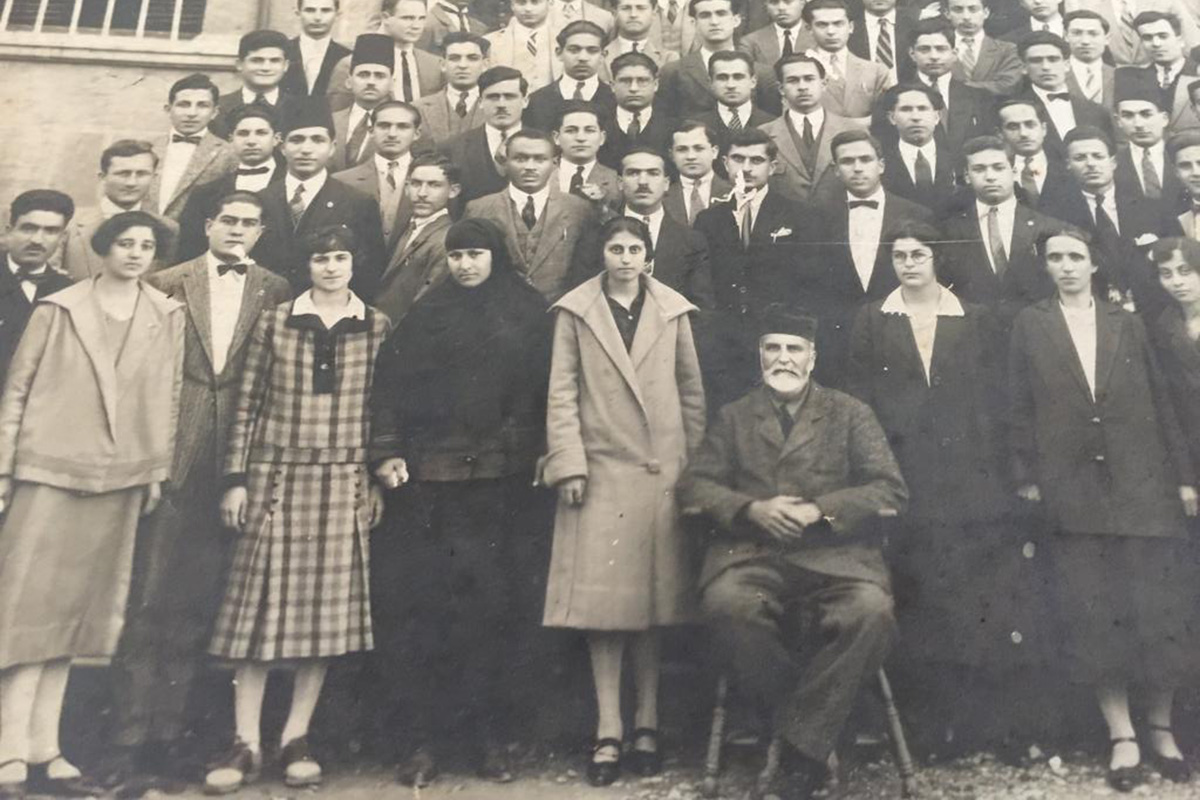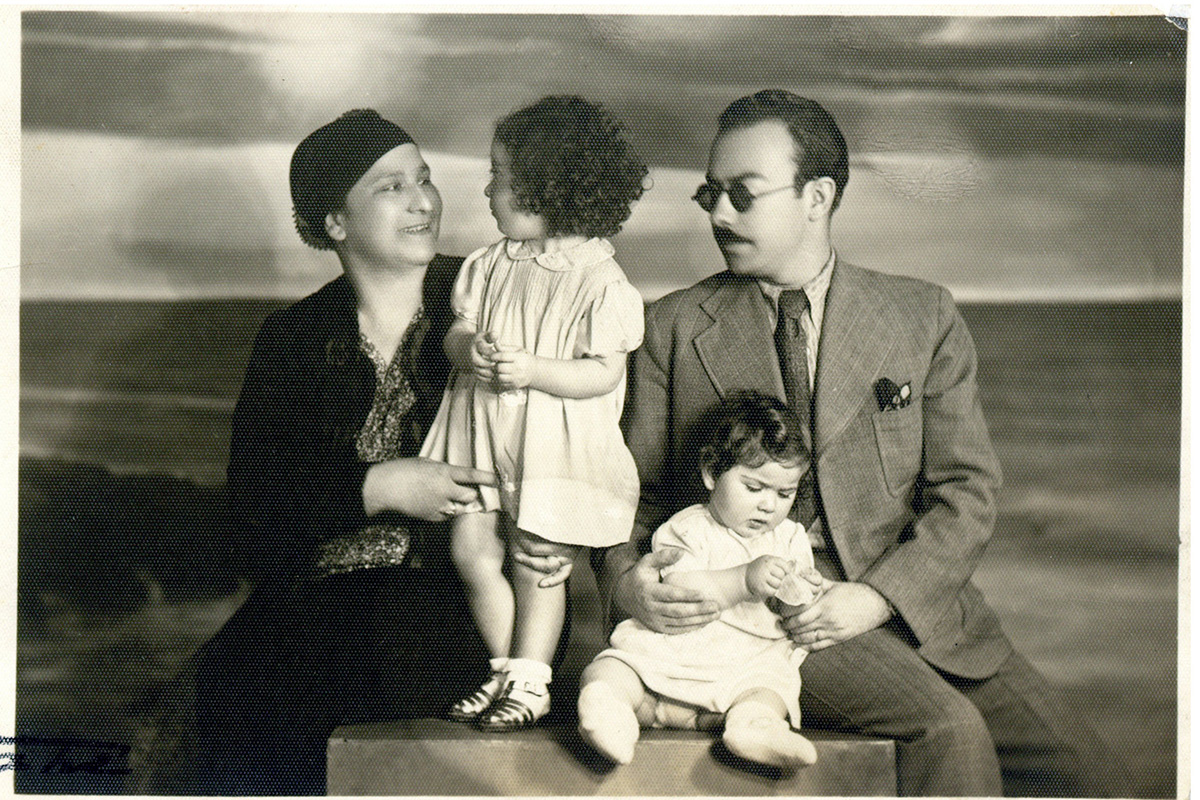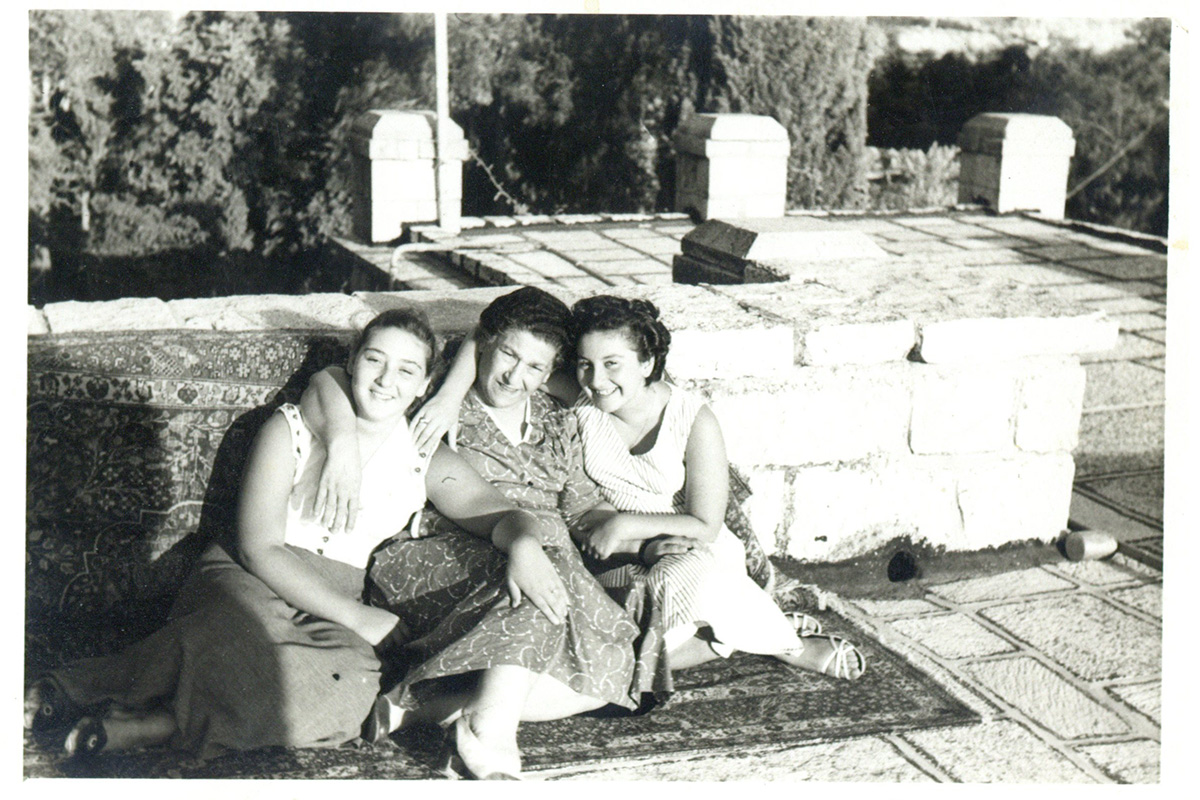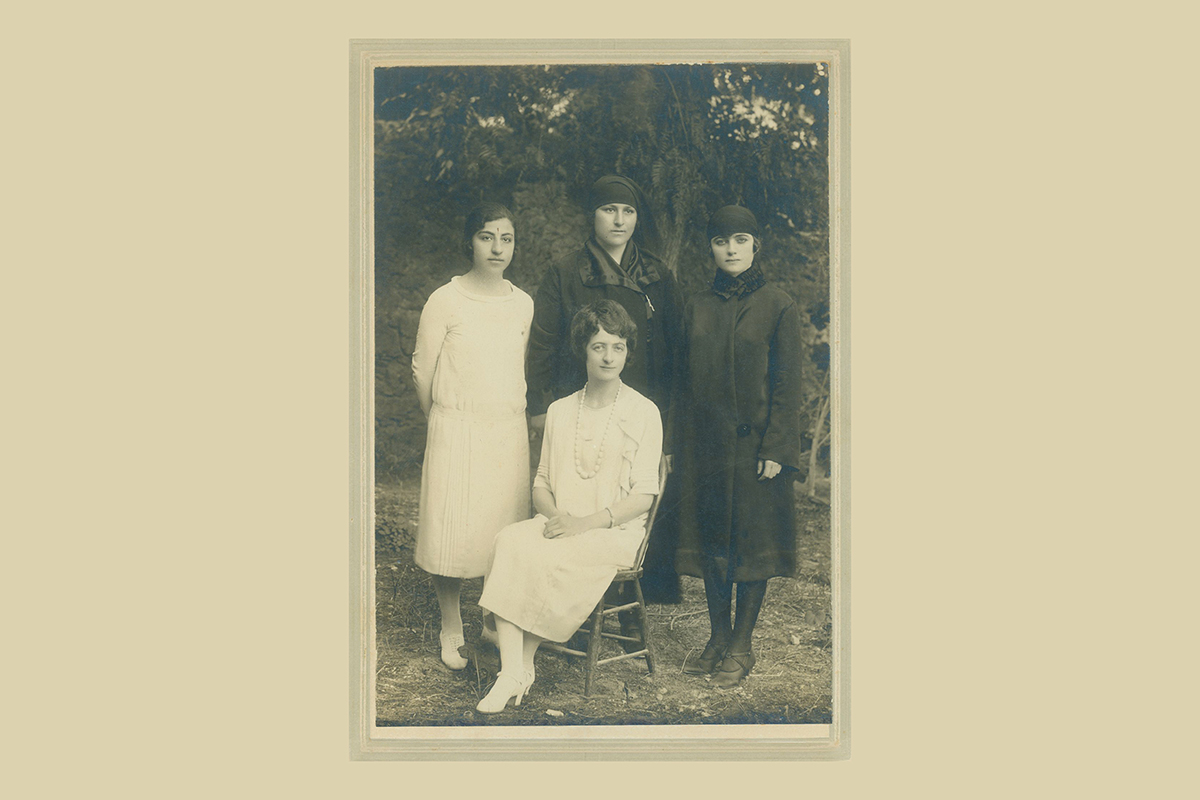Woman Pioneer: Alumna Saniya Habboub
One of the first graduates of the American Junior College for Women, Saniya Habboub pursued her aspiration with dogged determination to become the first Lebanese woman to obtain her MD abroad.
A commemorative photo from 1926 shows a seated Frances Pryor Irwin, principal of the newly founded American Junior College for Women (AJCW), with three young women standing behind her. They are Armanouhi Mugrditchian, Saniya Habboub, and Munira Barbir, the college’s first graduating Sophomores and proud recipients of the “American Junior College for Girls, Syria” diploma.
Of the three, Habboub anticipated a smooth transition to the school of medicine at the American University of Beirut (AUB), with the ultimate goal of helping the women in her community. When her plan was thwarted by societal pressures, she became the first Lebanese woman to obtain her Medical Degree in the US and one of the first trailblazers for generations of women.
The stars seemed aligned in Habboub’s favor well before she was born. Adila Al-Jazairy, her illiterate Turkish mother, had been on her way from Istanbul to Beirut as a young bride when she saw a woman reading a newspaper in the train compartment. Should they be blessed with a daughter, she later told her husband, she would want her to be educated and able to read.
A great believer in self-improvement and a pioneer in his own right, Mustapha Habboub was unlikely to oppose his new bride – a principle he would hold for both of his daughters.
“Having lost his father at a young age, he started working secretly in a tannery while still at school,” recounts his granddaughter, Saniya Ellen Othman, her mother’s namesake. “He was found out when his mother noticed that his hands were stained with blue dye.”
Habboub eventually bought the tannery and built it into a lucrative leather-making business, manufacturing undersoles for Ottoman soldiers. Settling his family in a villa in Ain Mreisse, the enlightened Habboub hosted large gatherings of eminent scholars from across Lebanon. The Habboubs were probably the first in the neighborhood to own a large dining table and eat with a “ferteyke” (Turkish for fork) recounts Saniya Habboub’s granddaughter, Leila Othman Asser.
It was in this cultured environment that Saniya Habboub was born in 1901, the second of five siblings: an older brother called Hassan, two younger sisters, Afifeh and Nahil – who later studied dentistry – and a younger brother, Abdel Hamid. Though both her parents enabled her education, her father was a great influence in her life. Her schooling started with learning the Quran, before she eventually joined the American School of Girls (ASG).
She contracted typhoid fever when she was 14, and spent an entire month, semi-conscious, in bed. “When the fever finally broke, she found out that 12-year-old Afifeh, who had also caught the disease and lain in a bed next to her, had died,” says Asser.
As a result of typhoid, Habboub suffered from phlebitis in her left leg, which forced her to drag her foot for the rest of her life.
At 16, she married their neighbor, a doctor. “It was not an arranged marriage,” says Othman. “He had expressed his wish to her parents, and she accepted.” Habboub left ASG to relocate with her husband to Damascus. Tested by friction between the new bride and her mother-in-law, the childless couple divorced two years later, though they remained friends for the rest of their lives.
On returning to Beirut, she resumed her studies at ASG. By the time she had obtained her high-school degree, the Syrian Mission’s plans to extend women’s education beyond the secondary level – placed on hold by the outbreak of the Great War – had been revived. As early as 1914, ASG students, some backed by their families, had been appealing to the administration to grant them the same privilege as their “brothers.”
Habboub joined the inaugural freshman class of the AJCW in 1924, which was held on the all-women campus of the ASG. After completing her sophomore year, she went on to AUB intending to study medicine. Though she had her parents’ blessing, the community in which she lived disapproved; not only was a woman in medicine unthinkable, but the fact that “Mustapha Habboub’s daughter” would also be mingling with men was downright scandalous.

Pictured in front of Jessup Hall at AUB. (photos: courtesy of Laila Asser)
“… people used to spit at me when they saw me in the street and curse my father and mother for their improper upbringing of their daughter,” she once told a reporter. “My parents tolerated all that, and kept sending me to school. They gave me everything I needed. They were determined to educate me.”
While she describes how she ran from class to class with her three-layer veil on, Othman and Asser reveal that she did in fact remove it on campus, as seen in photos.
Habboub’s willpower prevailed over societal pressure. She heard of a doctor in Damascus who had studied medicine in the US and returned to open a clinic in his hometown. Without telling a soul, Habboub headed for Sahet El-Bourj and took a taxi to Damascus. As the doctor was not available to meet with her, and knowing no one in the city, she was compelled to check into a hotel, says Asser.
Brave as her actions may have been, she was acutely aware of her unconventional behavior. “I will never forget the look the hotel clerk gave me when I walked in and asked for a single room,” Habboub had reported. “He gave me the key, and I went up to my room as coldly as I could. I was petrified. Once in my room, I moved every movable piece of furniture in it up against the door and having thus done all I could to discourage visitors, I sat on my bed in my nightgown all night, too frightened to sleep.”
After her meeting with the doctor – who was nevertheless surprised at her inquiries – during which she learned about the Women’s Medical College in Philadelphia, she was convinced that the US was where she should go to pursue her calling.
Fully supporting her decision – after all, it had been their dream that their daughters realize their potential – her parents facilitated the transition. As Habboub would be traveling unaccompanied, which was not “proper” back then, her father made sure to book her passage on the same day as that of a couple he knew from International College. The morning she was due to board the ship for New York – August 11, 1926 – she lost her nerve, recounts Othman.
“My grandmother walked into her room and said to her ‘Look Saniya, you are different from other people. If you want to go, just go.”
First chance she got on the ship, Habboub uncovered her face, says Asser, though every time she crossed paths with a man, she instinctively reached for the veil. Nineteen days later, when the ship docked in New York, she was met by a driver who took her to International House where she was staying. There she met several Arabs, men and women, and made friends. In 1931, she obtained her Medical Degree from the Western College in Cincinnati, Ohio, followed by two years specializing in obstetrics at the Women’s Medical College in Philadelphia, Pennsylvania.
The unusual case of a Muslim woman studying medicine in the US was picked up by The Hamilton Daily News, Ohio. On 10 January 1928, the newspaper published a photo of Habboub sporting a bob, under the heading “Breaks Traditions,” describing how the 26-year-old “Mohammedan woman,” had broken the “age-old traditions of her race,” and had adopted “occidental ways” in every way. Decades later, in 2022, she would be celebrated in a Google Doodle.
On her graduation day, the college invited the renowned historian and professor at Princeton Philip K. Hitti to give the commencement speech. In gratitude to her college, Habboub endowed it with a scholarship in her name.
Though her father had given her a letter of credit when she left Lebanon, she never used it, preferring instead to earn her own income, by teaching embroidery and stitching.
When she returned to Lebanon in 1933 to open her clinic, custom dictated that she could only work with another male doctor. Ever the maverick, she refused and set up her own practice in obstetrics and general medicine in Bab Idriss.
Speaking of that stage in her life, Habboub had said: “A lot of my clients took me for a midwife at first, but the point is they came – the entire population of Basta came, and I worked around the clock. My acceptance by the Basta society on such a scale encouraged other girls to seek more education and prefer it to early marriage.”
“Education and determination – these are the keys to women’s progress,” she had added.
In 1937, Habboub married Muhammad al-Naqqash, a journalist who had come to interview her when she made a name for herself. Yet another unconventional move by Habboub as al-Naqqash was 12 years her junior.

Habboub with husband Muhammad El-Naqqash and daughters Saniya Ellen (standing) and Iffat Elizabeth.
For 50 years, she treated underprivileged women at no charge, made home visits, and earned the community’s respect. She was one of the founding members of the Lebanese Red Cross, and a member of several organizations, such as the Moslem Orphanage and Young Women’s Moslem Association. She also served as a school doctor at her alma mater, ASG.
In 1982, to mark her 50 years of service, the Lebanese Government granted her the Health Medal of Merit.
She died a year later, at the age of 82, from pancreatic cancer which, says Asser, she diagnosed herself.
The picture Asser paints of her grandmother is one of a pragmatic, strong-minded, no-nonsense individual. “She was not the romantic type at all,” she says. “She did not abide frivolity and did not care for material possessions. ‘Money is a servant,’ she used to say, a means to an end, rather than the end itself.”
Nor was she brought up to observe decorum. “My grandparents and parents did nothing out of decorum,” says Othman, adding that her mother was always proud of her identity as a Muslim Arab but was not conservative. “‘Freedom is great,’ she would tell us, ‘but freedom entails responsibility.’”
 Habboub believed that her daughters should make their own career choices.
Habboub believed that her daughters should make their own career choices.
Besides Othman, the al-Naqqashes had a daughter named Iffat Elizabeth. Asked what influence her mother’s character and achievements had on both, Othman says that they were left to make their own choices in life. While she pursued higher education, her sister had no interest in doing so.
Habboub retired in 1965. Her clinic was looted during the 1975 civil war. Crestfallen at seeing it destroyed, she wanted to retrieve nothing from it. The only significant items that survived were her stethoscope and one diploma.
“I urged her to remove all her belongings, photos, and framed degrees from the clinic for safekeeping, but she refused,” says Othman. “I ended up collecting what I could, but much was lost.”
Perhaps an article written by Habboub in 1984 – published posthumously in An-Nahar newspaper and reprinted in English in the Arab Institute for Women’s Al Raida – best sums up how she felt about the challenges she had faced and the strides made through the decades in higher education for women.
In it, Habboub describes the joy she felt on seeing young university women entering campus, and their prospects of becoming enlightened and educated, “capable of establishing a home, creating a society, and building a nation.”
Tucked into this celebration of women is a poignant portrayal of her own experience: “You are not anymore a subject of surprise, mockery, or shame; nor an unnatural event, a strange undomesticated bird isolated from the flock.”
